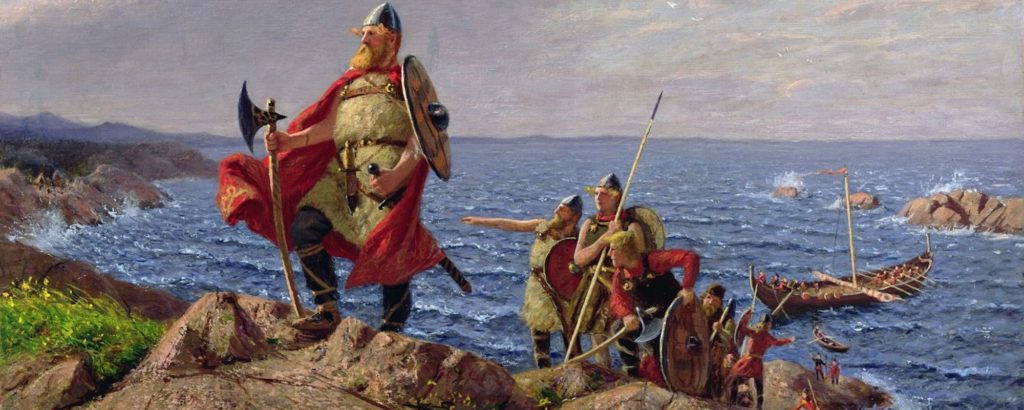Scandinavia is a group of countries or region in northern Europe, in the continent of Europe.
The countries include Denmark, Norway and Sweden, sometimes also Finland and Iceland. Also included in the list are the Faroe Islands, a self-governing part of Denmark and Greenland, which is a Danish (of Denmark) territory.

Key person: Leif Erikson
Leif Erikson was born to be an explorer. The wise and striking Viking was son of Erik the Red, an important Viking chieftain. A sailor from Greenland he is generally believed to be the first European to reach the North American continent, nearly four centuries before Christopher Columbus arrived in 1492. He called the new land Vinland.


Click on the image to download your own coloring page!
Confused about which countries are in Scandinavia and why?
When speaking of culture and shared history (and design), the words “Scandinavian” and “Nordic” are interchangeable (mean the same thing). The histories of Denmark, Sweden, Norway, Iceland, and Finland are so intertwined (linked), with similar holidays and traditions. The political systems across all these countries, especially their welfare models, are similar, though not identical. Therefore, this regional group of five countries is often referred to as culturally Scandinavian.
If you want to be more accurate, theses are some recommendations:
- Geographic (map) context : “Scandinavia” means Denmark, Sweden, Norway, and the Faroe Islands.
- Political (meaning ideas, strategies, government or the public affairs of a particular group) context, “Scandinavia” means the region that includes Denmark, Sweden, Norway, and the Faroe Islands.
- “Nordic” refers to Denmark, Sweden, Norway, and the Faroe Islands plus Finland and Iceland.
The Scandinavian Peninsula is made up of Sweden and Norway. This long peninsula extends southward from the Barents Sea in the north, the Norwegian sea to the west and the Gulf of Bothnia and the Baltic Sea to the east. Norway lies to the east, and Sweden lies to the west. The landscape essentially consists of a mountainous ranges, created by glaciation shift about 2,600,000 to 11,700 years ago. Sweden has comparatively gentle slopes of of a low gradient down to the Baltic Sea, while Norway’s mountains continue close to the coastline, and are deeply cut by beautiful fjords.
The word “Nordic” can be used specifically to refer to the geographic and political Nordic region, which includes Denmark, Sweden, Norway, Iceland, and Finland. These are also known as the norse countries.
So what language is spoken in Scandinavia? The term “Scandinavian languages” refers exclusively to the three languages that are mutually understood (in theory) by speakers of each language: Danish, Swedish, and Norwegian. Finnish is part of the Finnic group of the Uralic languages, which also include Estonian and Hungarian. Swedish is also an official language of Finland and Swedish-speaking Finns constitute 5% of the population; this dialect is called Finland Swedish.
